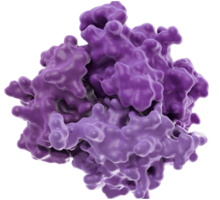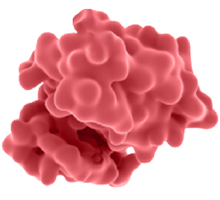RIPTAC THERAPEUTICS WORK BY a “Hold and Kill” mechanism:
1 Holding together Two proteins:
a tumor-specific protein and a protein with essential function.

At Halda, we are expanding beyond today’s precision oncology approaches with RIPTAC™ therapeutics (Regulated Induced Proximity TArgeting Chimeras) therapeutics is a novel drug modality that employs a hold and kill mechanism. RIPTAC therapeutics are bifunctional small molecules that selectively target tumors by holding a tumor-specific protein and a protein with essential function together in a trimeric complex which involves the formation of neo protein-protein-interactions. This mode of action results in abrogation of the essential protein function and subsequent cancer cell death.
RIPTAC therapeutics open up new territory for anti-cancer therapies. They selectively target cancer cells by binding intracellular proteins, regardless of whether these proteins have enzymatic activity or drive the disease. Unlike other therapeutic modalities, the hold and kill mechanism of RIPTAC therapeutics does not rely on disease drivers to achieve selective cancer killing. This unique mode of action addresses the various ways cancer has evolved bypass mechanisms of resistance, a common limitation of precision oncology medicines. Our initial focus is to develop RIPTAC therapeutics that extend treatment options for cancer patients resistant to standard of care as well as applications in earlier lines of therapy.
RIPTAC therapeutics are an innovative, new application of bifunctional small molecules. RIPTAC therapeutics are designed to selectively target tumors and directly kill cancer cells by holding together, with defined orientation and purpose, a tumor-specific intracellular protein (targeting protein) and a protein with essential function (effector protein). The trimeric complex drives the formation of new, or neomorphic, protein-protein interactions, abrogating an essential function within cancer cells. Our research has demonstrated the importance of not only selecting the appropriate pair of proteins but designing this very particular interaction to achieve optimal activity and pharmacology.


a tumor-specific protein and a protein with essential function.


